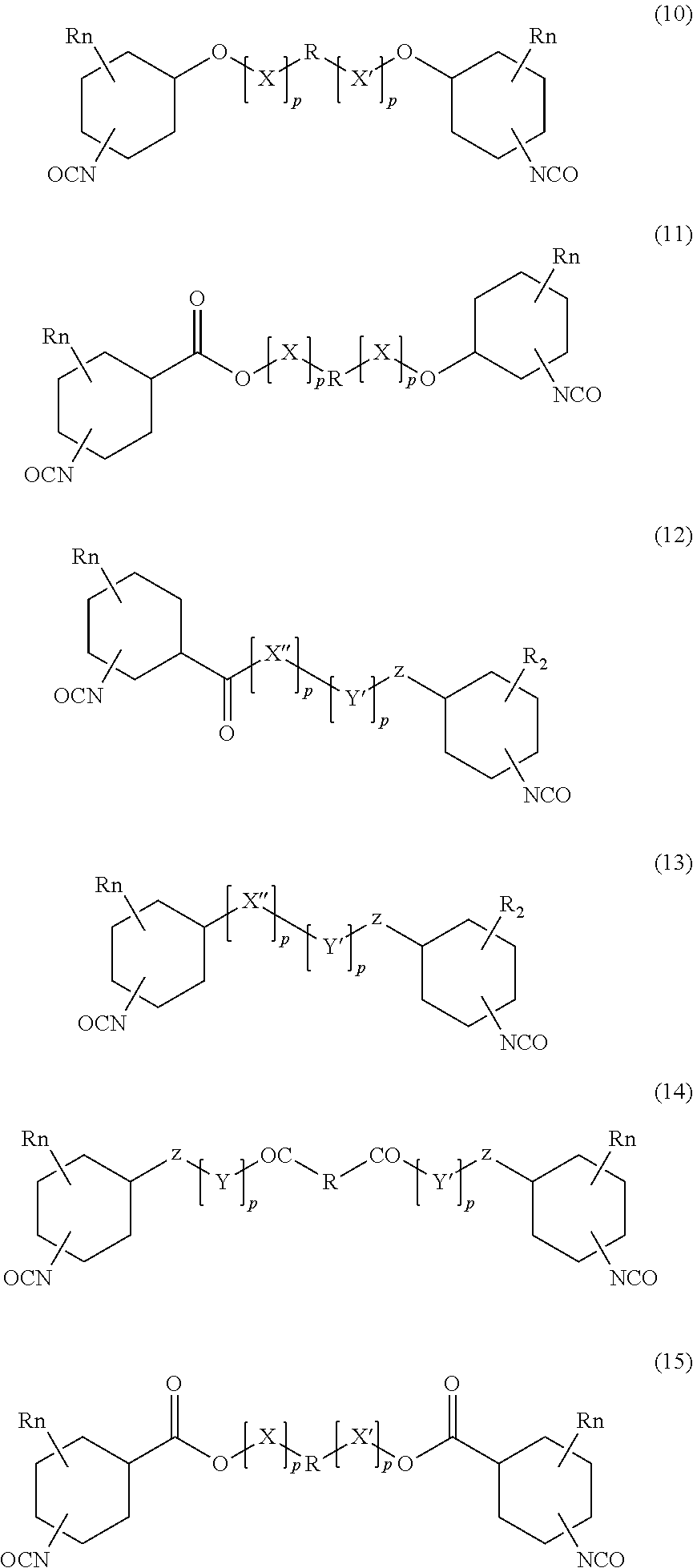Absorbable polyurethanes and methods of use thereof
a technology of biodegradable polyurethanes and polyamides, applied in the direction of polyurea/polyurethane coatings, prosthesis, aerosol delivery, etc., can solve the problems of slow degradation rate, potential toxicity problems, and shortcomings of prior art compositions, and achieve the effect of slow degradation rate and reduced degradability
- Summary
- Abstract
- Description
- Claims
- Application Information
AI Technical Summary
Benefits of technology
Problems solved by technology
Method used
Image
Examples
example 1
Synthesis of 6-(4-nitrophenoxy)-hexanoic acid methyl ester
[0178]
[0179]To a mixture of 4-nitrophenol (150 g), Potassium carbonate (600 g), sodium iodide (10 g) in anhydrous acetone (2.1 liter) was added methyl 6-bromohexanoate (156 g) and heated to reflux for 48 hours. Acetone was distilled and water (2 liter) was added. Crude 6-(4-nitrophenoxy)-hexanoic acid methyl ester was filtered, dried and recrystallised from a mixture of ethyl acetate and hexane (1:6) to obtain pure 6-(4-nitrophenoxy)-hexanoic acid methyl ester (130 g) as a white powder with a melting point of 84.5.5-86.6° C. The product was characterized by 1H NMR (CDCl3) δ 1.56 (m, 2H, CH2), 1.74 (m, 2H, CH2), 1.90 (s, 2H, CH2), 3.68 (s, 3H, Ester), 4.06 (t, 2H, CH2), 6.92 (d, 2H, Ar), 8.20 (d, 2H, Ar).
[0180]Similarly, substitution of 4-nitrocyclohexanol for 4-nitrophenol provides the cyclohexane analog, according to procedures known to those skilled in the art.
example 2
Synthesis of 6-(4-nitrophenoxy)-hexanoic acid
[0181]
[0182]A mixture of 6-(4-nitrophenoxy)-hexanoic acid methyl ester (125 g) and concentrated hydrochloride acid (1.2 L) was refluxed for 16 hours. The reaction mixture cooled was to room temperature, filtered, dried and recrystallised from a mixture of ethyl acetate and hexane (1:6) to obtain pure 6-(4-nitrophenoxy)-hexanoic acid (95 g) as a white powder with a melting point of 104-107° C. The product was characterized by 1H NMR (CDCl3) δ 1.60 (m, 2H, CH2), 1.76 (m, 2H, CH2), 1.90 (m, 2H, CH2), 2.42 (t, 2H, CH2), 4.04 (t, 2H2, OCH2), 6.96 (d, 2H, Ar), 8.20 (d, 2H, Ar).
[0183]Similarly, preparation of the non-aromatic (reduced) analog is achieved by substitution of the corresponding cyclohexane analog, according to procedures known to those skilled in the art.
example 3
Synthesis of 6-(4-nitrophenoxy)-hexanoyl chloride
[0184]
[0185]A mixture of 6-(4-nitrophenoxy)-hexanoic acid (20 g), thionyl chloride (40 ml) and dimethylformamide (0.5 ml) was refluxed for 5 hours. Excess thionyl chloride was distilled off under reduced pressure. Dry toluene (20 ml) added and solvent was removed under reduced pressure to obtain 6-(4-nitrophenoxy)-hexanoyl chloride (20 grams) as light yellow oil.
[0186]Similarly, preparation of the non-aromatic (reduced) analog is achieved by substitution of the corresponding cyclohexane analog, according to procedures known to those skilled in the art.
PUM
| Property | Measurement | Unit |
|---|---|---|
| Young's Modulus | aaaaa | aaaaa |
| Young's Modulus | aaaaa | aaaaa |
| tear strength | aaaaa | aaaaa |
Abstract
Description
Claims
Application Information
 Login to View More
Login to View More - R&D
- Intellectual Property
- Life Sciences
- Materials
- Tech Scout
- Unparalleled Data Quality
- Higher Quality Content
- 60% Fewer Hallucinations
Browse by: Latest US Patents, China's latest patents, Technical Efficacy Thesaurus, Application Domain, Technology Topic, Popular Technical Reports.
© 2025 PatSnap. All rights reserved.Legal|Privacy policy|Modern Slavery Act Transparency Statement|Sitemap|About US| Contact US: help@patsnap.com



